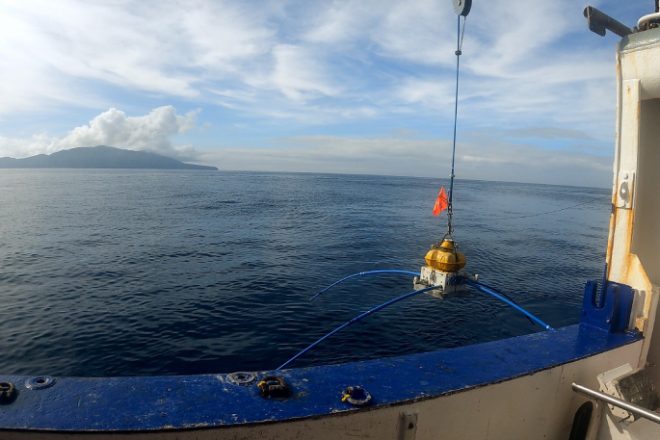調査船タンガロアは、ファカアリ/ホワイト火山とトゥーワ/マヨール島の火山の火山系を研究する最後の旅に乗り出しました。これはGNS Scienceが主導するビハインド・ザ・ウェーブズ・プログラムの一部です。目的は、降灰、火砕流、地すべり、津波などの潜在的な火山イベントの引き金、危険、影響についてより深く理解することです。
GNSサイエンス、スクリップス海洋研究所、および2人のBLAKE GNSアンバサダーの科学者は、3月28日から4月12日までの間、200個の海底電磁センサーのうち残りの39個を設置します。これらのセンサーは、火山に栄養を与えるマグマ系の画像を提供し、熱水噴出が活発な地域を特定します。
GNS Scienceの上級火山地球物理学者でプログラムリーダーのCraig Millerによると、過去の噴火の頻度、規模、原因に関する新しい情報は、これまでの航海ですでに明らかになっています。初期の分析では、ファカアリの北西にマグマと思われる深層流体の痕跡があることが明らかになっています。これが事実であれば、今後の火山の監視方法に影響が及ぶ可能性がある。この地域の地震活動は、火山活動の増加を示している可能性があります。
海底堆積物サンプルから得られた暫定的な結果から、1800年代以降に記録された噴火と比較して、過去数千年の間に噴火が大きかったことが示唆されている。研究チームは今、これらの噴火が本土に灰を運ぶのに十分な規模であったかどうかを調査したいと考えています。
以前の水中調査のデータにより、以前に熱水活動が行われた場所や、熱水流体の活発な水中浸透場所が特定されている。これらの知見は、スカイテムシステムを使用して2023年初頭に実施された空中調査とあわせて、火山全体にわたる過去と現在の熱水活動をマッピングするのに役立ちます。この情報を使用して、岩石が弱くなった地域や過去に地すべりが発生した場所を示す正確な3Dモデルを作成します。地すべりは噴火を引き起こしたり津波を引き起こしたりする可能性があるため、これは非常に重要です。
「地下イメージングは、堅牢な数値シミュレーションとモデルに貢献しています。将来の火山イベントからベイ・オブ・プレンティに考えられる複数のシナリオを評価するために、これらのモデルを使用し始めています」とCraig氏は言います。「これらの火山災害の確率と影響を判断できれば、火山災害が発生したときによりよく備えることができます。」
Beneath the Wavesプログラムは、さまざまな大学や緊急事態管理機関の協力者が協力して実施しているGNS主導の取り組みです。




























































